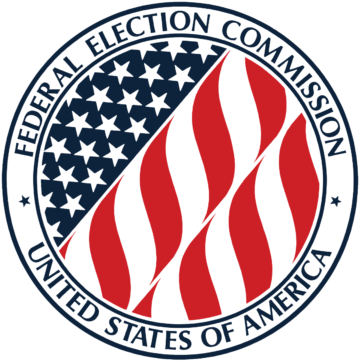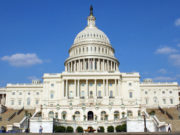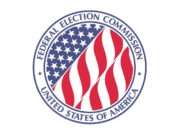Via Electronic Filing
Att’n: Neven F. Stipanovic
Acting Assistant General Counsel
Federal Election Commission
999 E Street N.W.
Washington, D.C.
For the third time in six years, the Federal Election Commission (“FEC” or “Commission”) has requested comments “on whether to begin a rulemaking to revise its regulations concerning disclaimers on certain internet communications, and, if so, on what changes should be made to those rules.”[1] The Institute for Free Speech (“IFS” or “Institute”) has commented each time, most recently last year. While incorporating both prior sets of comments by reference,[2] the Institute writes further “in light of recent developments since the close of the last comment period.”[3]
The Notice does not explain the developments the Commission has in mind. It refers only to “disclaimer requirements as applied to online communications by American citizens,” and cites to a single advisory opinion.[4] At the Commission’s September 14, 2017 open meeting, at which the decision to reopen the comment period was made, Commissioner Weintraub referenced media revelations regarding the use of social media by the Russian government during the 2016 campaign. But while that is a crucial issue of national importance,[5] and one that has received substantial attention from Congress and several federal agencies,[6] the deterrence of foreign powers is not among the FEC’s core competencies.
Consequently, the Commission must approach any rulemaking concerning foreign on-line spending by first recognizing that it may be ill-equipped, as a matter of both statutory authority and agency competence, to address the problem; that the extent of the problem is largely unknown; and that Congress is considering legislation on the issue.[7] As a result, any NPRM issued at this time should be intended to provide clarity and assistance to Americans.
In any event, the Notice makes no reference to political activity by foreign nationals or governments, and explicitly limits the scope of solicited comments. The Commission is considering “its regulations concerning disclaimers on certain internet communications,” and does not “propose changes to” any other portion of its Internet Communications rules.[8] Accordingly, the Institute will limit its comments here to the application of the small item and impracticality exemptions in the context of online and mobile advertising by American citizens.
A Rulemaking Will Provide Clarity to the Regulated Community
The Institute supports a rulemaking on this narrow question. As former Commissioner Cynthia Bauerly observed four years ago, “a rulemaking would be a far more productive and inclusive approach…[r]ather than the case-by-case approach” followed in recent years.[9] Disclaimer requirements raise important First Amendment concerns, and only a clear, bright line provides the necessary certainty.[10]
The Commission’s case-by-case approach is troubled. Advisory Opinion Requests regularly fail to secure four affirmative votes,[11] or result in “no rationale” advisory opinions that answer the request without giving any further guidance to the regulated community.[12] Moreover, as Commissioner Hunter has observed, “notwithstanding the [Federal Election Campaign] Act’s clear admonition that Commission advisory opinions are to be used only as protection against liability, rather than as an affirmative basis for finding liability, they are often not used in such manner.”[13] Advisory opinions are not the place for the Commission to establish “regulatory baseline[s]” for Internet advertising.[14] A bright-line rule, established by regulation, is the best route forward.
Current Law and Regulatory Structure
Federal law requires that express advocacy communications made through “any…type of general public political advertising,” must state who “paid for” that ad.[15] The FEC has interpreted this statute as it applies to Internet advertising, while recognizing that “the Internet is a unique and evolving mode of mass communication and political speech that is distinct from other media in a manner that warrants a restrained regulatory approach.”[16] Consequently, present regulations state that “[a]ll public communications…made by a political committee; electronic mail of more than 500 substantively similar communications when sent by a political committee; and all Internet websites of political committees available to the general public…must include disclaimers.”[17] Pointedly, however, this Commission excluded “communications over the Internet” from the definition of “public communication” unless the ad is “placed for a fee on another person’s Web site.”[18]
Such caution is to be commended.[19] As one federal court recently stated, “[i]t must be remembered…that the [I]nternet is the new soapbox; it is the new town square.”[20] And the Supreme Court has explained that “[w]hatever the challenges of applying the Constitution to ever-advancing technology, the basic principles of freedom of speech and the press, like the First Amendment’s command, do not vary when a new and different medium for communication appears.”[21]
Since 2011, when public comment on this Advanced Notice of Proposed Rulemaking was first solicited, Americans’ use of the Internet has dramatically expanded. Around that time, according to the U.S. Census Bureau, only 9.1 percent of Americans—and a mere 13.7 percent of users between the ages of 15 and 25—accessed the Internet at home via a mobile device.[22] By contrast, the most recent American Community Service Report on this question found that “75 percent” of households in 2015 “had a handheld computer such as a smartphone or other handheld wireless computer.”[23] And as the U.S. Supreme Court noted just a few Terms ago, “[a]ccording to one poll, nearly three-quarters of smart phone users report being within five feet of their phones most of the time.”[24]
This shift in Americans’ use of the Internet from stationary to mobile devices illustrates the danger inherent in any new disclaimer rule limited to a specific medium or technology.[25] For instance, had the Commission required “rollover” or “pop-up” disclaimers in 2011, an option that might have permitted most desktop users to view disclaimers efficiently, it might well have found itself forced to conduct a new rulemaking given the sudden prevalence of mobile devices, where such technology may not be practical.[26] The pace of technological development has not slackened, and there is little reason to believe that the Commission has special expertise in predicting the forms future political speech will take. In fact, where the FEC has been forced to grapple with rapidly-evolving technology, and even where regulated entities have come to it for guidance, the Commission has generally failed to provide meaningful answers.[27]
In short, any rule must be neutral both as to message and medium, and it must be able to function without regular case-by-case input from the Commission. Such a bright line will not hinder the development of new social media or Internet communications technologies, nor play favorites between different communications or speakers. Accordingly, the Institute urges that the Commission adopt the rule that it first suggested in 2011:
[F]or character-based paid Internet messaging, the Commission ought to ‘excuse disclaimers in any Internet advertising product where the number of characters needed for a disclaimer would exceed 4% of the characters available in the advertised product, exclusive of those reserved in the ad’s title.’[28] This rule has the benefit of being objective and easy to understand. It tracks the ‘impracticable’ and ‘small items’ exceptions already codified at 11 C.F.R. § 110.11(f). It makes it more likely that the online disclaimers that Americans view are ‘presented in a clear and conspicuous manner,’ as required by 11 C.F.R. § 110.11(c)(1). And it would exempt short-burst communications substantially similar to the ‘small-pixeled’ speech raised by the Revolution Messaging AOR.[29]
Finally, the Commission should consider whether the “small item” and “impracticality” exemptions should remain separate. Many of the advisory opinion requests dealing with Internet communications have raised both exemptions,[30] but the Commission does not appear to have granted exemptions from disclaimer requirements for reasons of impracticability.[31] At the same time, the Commission has suggested that “practicality (or convenience, in the regulatory vernacular) is the critical factor in determining the [small item] exception’s applicability.”[32]
This tension stems from the FEC’s recent difficulty recognizing that “impracticality,” as used in its regulations, was intended to address practical convenience, and not the outer limits of technological feasibility. This point can become obscured in the context of the Internet, which is poorly understood and relatively amorphous. But it is clear from the examples used by current regulations. As the Institute explained in 2011:
The Commission is [] aware of standard-sized bumper stickers, see 11 CFR 110.11(f)(1)(i), and equally aware that adhesive-backed logos can be manufactured in most any size. Nonetheless, the Commission, rightly, does not ask committees to choose between larger adhesive logos with disclaimers or no logos at all. The Commission does not ask whether an exception is “mandated by the physical limitations of [adhesive logo] technology.” Rather, it recognizes that committees may use (standard-sized) bumper stickers to speak to voters, and excuses speakers from including disclaimers on those bumper stickers.[33]
The observation is just as relevant today.
Accordingly, the Commission may wish to combine the two existing exceptions into one regulation excusing “inconvenient” disclaimers. An enumerated list of “inconvenient” situations could include the percentage-based approach suggested by the Institute, in addition to the categorical exclusions, such as for skywriting and bumper stickers, already contained in the relevant rules.[34] This approach would simplify the law, provide better guidance to regulated entities, and ensure that the Commission’s regulatory policy intrudes upon political speech to the least extent possible.
* * *
The Institute appreciates the Commission’s invitation to submit these commits, and requests that should any hearing be held in the future on this matter, that a representative of IFS be permitted to testify.
Respectfully submitted,
Zac Morgan Allen Dickerson
Staff Attorney Legal Director
https://www.ifs.org/wp-content/uploads/2017/11/2017-11-09_Morgan-Dickerson-Comments_FEC_Potential-Rulemaking-On-Internet-Communications-Disclaimers.pdf
[1] Notice 2017-12, 82 Fed. Reg. 46937 (Oct. 10, 2017) (“On October 13, 2011 the Federal Election Commission published an Advance Notice of Proposed Rulemaking….On October 18, 2016, the Commission reopened the comment period…”).
[2] Those comments were filed by the Center for Competitive Politics, as the Institute was known from its founding until October 2017, and can be found online at: http://sers.fec.gov/fosers/showpdf.htm?docid=98752 (2011) and http://sers.fec.gov/fosers/showpdf.htm?docid=354344 (2016).
[3] 82 Fed. Reg. 46938.
[4] Id., n. 9 and accompanying text.
[5] At this point in time, however, the amount of advertising by foreign entities remained largely unknown. The most popular number cited is approximately $100,000 out of some $6 billion spent in the 2016 cycle, but as political consultant Mark Penn has illustrated, it appears that as little as $6000 of that amount might actually fall within the FEC’s statutory authority. Mark Penn, “You Can’t Buy the Presidency for $100,000,” Wall Street Journal, Oct. 15, 2017; available at: https://www.wsj.com/articles/you-cant-buy-the-presidency-for-100-000-1508104629.
[6] E.g. Philip Ewing, “Tough Questions, Hours Of Hearings But No Silver Bullet On Russian Tech Interference,” NPR, Nov. 2, 2017, available at: https://www.npr.org/2017/11/02/561446855/tough-questions-hours-of-hearings-but-no-silver-bullet-on-russian-tech-interfere; Office of the Director National Intelligence, “Assessing Russian Activities and Intentions in Recent US Elections,” Intelligence Community Assessment, Jan. 6, 2017, available at: https://www.dni.gov/files/documents/ICA_2017_01.pdf.
[7] S. 1989; available at: https://www.congress.gov/115/bills/s1989/BILLS-115s1989is.pdf.
[8] 82 Fed. Reg. 46937.
[9] Cynthia Bauerly, “The Revolution Will Be Tweeted and Tubl’d and Txtd: New Technology and the Challenge for Campaign-Finance Regulation,” 44 U. Tol. L. Rev. 525, 534 (2013); also 2016 CCP Comments at 3 (citing same).
[10] Citizens United v. Fed. Election Comm’n, 558 U.S. 310, 324 (2010) (“The First Amendment does not permit laws that force speakers to retain a campaign finance attorney, conduct demographic marketing research, or seek declaratory rulings before discussing the most salient political issues of our day”).
[11] E.g. Advisory Opinion 2017-05 (Great America PAC) at 7 (finding that for questions five through seven, “[t]he Commission could not approve a response to this question by the required four affirmative votes”).
[12] Concurring Statement of Chairman Matthew S. Petersen, Advisory Opinion 2010-19 (Google) at 1 (“Because the Commission agreed that Google’s text ad proposal was not legally problematic, I concluded that Google was owed the protection provided by an advisory opinion, even if the resulting opinion lacked a basis for its conclusions”).
[13] Statement for the Record of Commissioner Caroline C. Hunter, Advisory Opinion 2010-19 (Google) at 6 (emphasis in original).
[14] Id.
[15] 52 U.S.C. § 30120(a).
[16] 71 Fed. Reg. 18589 (Apr. 12, 2006); also Advisory Opinion 2017-05 (Great America PAC) at 6 (citing same).
[17] 11 C.F.R. § 110.11(a)(1).
[18] 11 C.F.R. § 100.26.
[19] As the Institute noted in its 2016 comments: “To its credit, the FEC, has, by and large, come down on the side of encouraging electronic communications, rather than stifling them with additional regulations.” 2016 CCP Comments at 2.
[20] Coal. for Secular Gov’t v. Gessler, 71 F. Supp. 3d 1176, 1182 (D. Colo. 2014); aff’d sub nom. Williams v. Coal. for Secular Gov’t, 815 F.3d 1267 (10th Cir. 2016); cert. denied sub nom. Williams v. Coal. for Secular Gov’t, 137 S. Ct. 173 (2016).
[21] Brown v. Entm’t Merchs. Ass’n, 564 U.S. 786, 790 (2011) (internal citation and quotation marks omitted).
[22] Table 1B: Method of Accessing Internet at Home for Households, by Selected Householder Characteristics, 2010, available at: https://www.census.gov/data/tables/2010/demo/computer-internet/computer-use-2010.html.
[23] Camille Ryan and Jamie M. Lewis, “Computer and Internet Use in the United States: 2015,” American Community Service Reports, Sept. 2017 at 2; available at: https://www.census.gov/content/dam/Census/library/publications/2017/acs/acs-37.pdf
[24] Riley v. Calif., 134 S. Ct. 2473, 2490 (2014).
[25] It bears some notice, for instance, that the 160 character limit on “Short Message Service” technology has far less relevance today than it did in 2002. Cf. Advisory Opinion 2002-09 (“Target Wireless”).
[26] See Open Meeting of September 14, 2017, Statement of Commissioner Matthew S. Petersen at 55:10 (expressing concern that a rollover may not effectively deliver a disclaimer on a smartphone device).
[27] There was, for instance, just a seven-year period between the advisory opinions issued in Target Wireless and Google. And three years later, the request for an exception to the disclaimer rules from Revolution Messaging deadlocked the Commission.
[28] The Commission, after sober reflection, may believe that a different percentage is preferable. But it should take care to ensure a speaker’s message is not overshadowed. In a recent decision, the Ninth Circuit invalidated a commercial disclaimer requirement where the compelled language occupied 20 percent of covered advertisements. Am. Beverage Ass’n v. City and Cnty. of San Francisco, 871 F.3d 884 (9th Cir. 2017). The First Amendment likely compels a lower ceiling in political speech cases.
[29] 2016 CCP Comments at 4 (citations omitted). Additionally, as the Institute’s proposal is character-based, it will function to capture all communicative speech done by text online—including advertisements using emojis.
[30] E.g. Advisory Opinion Request of Revolution Messaging at 1 (“…we are writing…to request an advisory opinion regarding the applicability of the ‘small items’ and ‘impracticable’ exemptions to the disclaimer requires under the Federal Election Campaign Act and Commission regulations to mobile phone advertisements”).
[31] The closest that the Commission appears to have gone was in 2004, when the FEC permitted a non-candidate to recite the “stand by your ad” disclaimer for live feed radio advertisements delivered from a helicopter. Advisory Opinion 2004-10 (Metro Networks).
[32] Statement of Reasons of Vice Chairman Darryl R. Wold, Commissioners Lee Ann Elliott, David M. Mason, Danny L. McDonald, and Karl J. Sandstrom, (MUR 4791, Ryan for Congress) at 2.
[33] 2011 CCP Comments at 3-4.
[34] The small-item exception itself notes that it applies to those items where a “disclaimer cannot be conveniently printed.” 11 C.F.R. § 110.11(f)(1).














